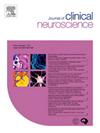Same-day mask-based gamma-knife stereotactic radiosurgery: workflow analysis and impact
IF 1.9
4区 医学
Q3 CLINICAL NEUROLOGY
引用次数: 0
Abstract
Objective
Over the last 30 years, there has been a steady move towards the use of mask immobilization in SRS. Benefits of masks include the ability to hypofractionate SRS and improved patient comfort. However, there has been criticism that it eliminates the possibility of same-day, “wheels in to wheels out” treatments, as mask fixation is traditionally done on a separate day. This study evaluates the feasibility of doing mask fabrication and SRS treatment on the same day.
Methods
Patients who underwent SRS from September 2020 to June 2021 were reviewed. Leksell Gamma Knife (LGK) console data were processed, and operator reports were analyzed for treatment time, number of pauses, alarms, and pause durations.
Results
A total of 100 patients met the inclusion criteria. 52 patients underwent same-day fabrication and treatment, and 48 patients were treated at least one day following mask fabrication. Same-day patients had more frequent pauses and longer average pause durations than different-day patients. However, there were no significant differences in predicted vs. actual treatment times or the number of treatment alarms between groups.
Conclusion
Mask-based SRS can be done safely and efficiently in a single day, mirroring the approach of frame-based treatments. There is an increased number of pauses in the same-day group; however, it does not result in a significant prolongation of treatment time. The reduction in the number of visits to a GK facility for SRS may impact the overall subjective experience, increasing patient satisfaction.
当日基于面罩的伽玛刀立体定向放射外科:工作流程分析和影响
目的:在过去的30年里,在SRS中使用面罩固定已经有了稳定的进展。口罩的好处包括能够减少SRS的分裂和改善患者的舒适度。然而,也有人批评说,由于传统上口罩固定是在另一天进行的,因此消除了当天“轮进轮出”治疗的可能性。本研究评估了口罩制作与SRS治疗在同一天进行的可行性。方法回顾了2020年9月至2021年6月期间接受SRS的患者。对Leksell伽玛刀(LGK)控制台数据进行处理,并分析作业者报告的处理时间、暂停次数、警报和暂停持续时间。结果100例患者符合纳入标准。52例患者在同一天制作和治疗,48例患者在制作口罩后至少一天接受治疗。同日患者比不同日患者有更频繁的停顿和更长的平均停顿时间。然而,两组之间在预测治疗时间和实际治疗时间或治疗报警次数方面没有显著差异。结论基于面罩的SRS可以在一天内安全有效地完成,反映了基于框架的治疗方法。同日组的暂停次数有所增加;然而,它不会导致治疗时间的显着延长。减少到GK机构进行SRS的次数可能会影响整体主观体验,提高患者满意度。
本文章由计算机程序翻译,如有差异,请以英文原文为准。
求助全文
约1分钟内获得全文
求助全文
来源期刊

Journal of Clinical Neuroscience
医学-临床神经学
CiteScore
4.50
自引率
0.00%
发文量
402
审稿时长
40 days
期刊介绍:
This International journal, Journal of Clinical Neuroscience, publishes articles on clinical neurosurgery and neurology and the related neurosciences such as neuro-pathology, neuro-radiology, neuro-ophthalmology and neuro-physiology.
The journal has a broad International perspective, and emphasises the advances occurring in Asia, the Pacific Rim region, Europe and North America. The Journal acts as a focus for publication of major clinical and laboratory research, as well as publishing solicited manuscripts on specific subjects from experts, case reports and other information of interest to clinicians working in the clinical neurosciences.
 求助内容:
求助内容: 应助结果提醒方式:
应助结果提醒方式:


